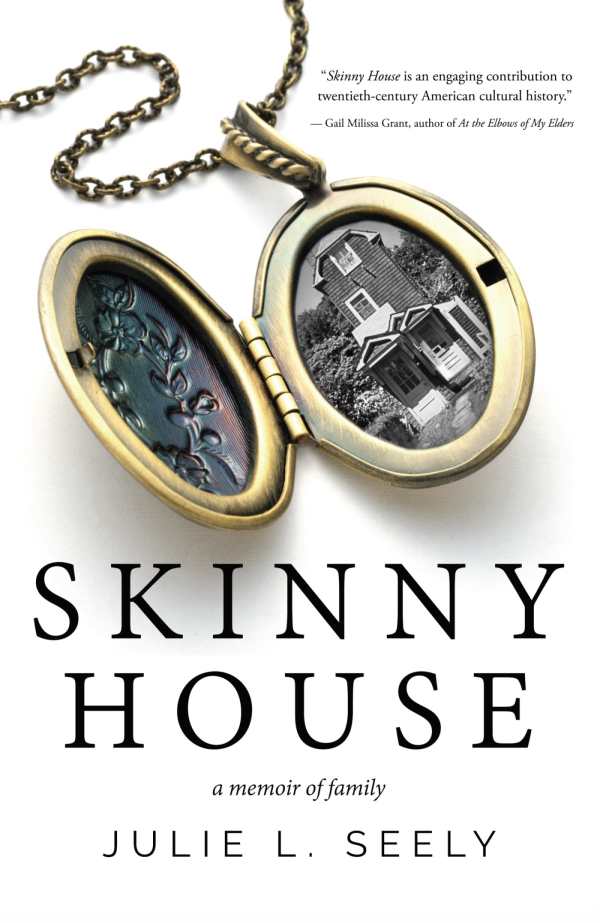Skinny House
A Memoir of Family
Skinny House is the vibrant, complicated story of one family amid the quest for racial equity in America.
Julie L. Seely’s family memoir Skinny House also tells a broader story about American and African American history.
Seely never knew her grandfather, Nathan, but the absence left behind after his death reverberated in her family. Her childhood was marked by a mysterious silence. It wasn’t until she was an adult that Seely decided to unearth her family’s story, and what she found was remarkable, impacting her sense of personal history and testifying to a broader narrative of triumph and struggle for black families. Skinny House sheds a personal light on the Great Migration, the Roaring Twenties, the Great Depression, and the decades that followed.
Nathan was a carpenter who made a healthy living in the 1920s building houses for “colored people,” but the Great Depression destroyed his business and very nearly his family. He rebuilt his life, and his family’s home, which became known as the Skinny House—a landmark in Mamaroneck, New York. But being born into the hard part of the story shaped Seely’s father’s view of himself and his relationship with Nathan, adding another layer to Seely’s tale.
The multilayered nature of the narrative is alluring. It’s not just the story of Seely’s family, but includes her own account of resurrecting the family history. The threads of these stories are well balanced. Seely’s narrative voice is elegant, and her book is well paced and full of vibrant imagery. Each character is crafted with empathy and clear-eyed honesty. Nathan’s pioneering spirit and resolve are stirring, and while he is at the heart of the story, his roots follow through to Seely’s childhood in Baltimore and through other branches of the family.
Research is evident in this family story, even though many of its key players had passed away by the time Seely wrote it. She balances filling in gaps of information with decisions to let empty spaces resonate, echoing her desire to know and her simultaneous need to rest in the unknown.
Photographs are clear despite their age, used to highlight personalities and the house to give a greater sense of the family’s history. A portrait of Nathan in an early chapter is particularly stunning. The central image of the book—a three-story house just ten feet wide, built from salvaged materials—captures the spirit of Seely’s family and its patriarch: ingenuity, determination, and closeness. A brochure advertising Nathan’s business is a moving historical artifact, conveying the dream of middle-class life that carried black families during the Great Migration.
Skinny House is the vibrant, complicated story of one family amid the quest for racial equity in America.
Reviewed by
Melissa Wuske
Disclosure: This article is not an endorsement, but a review. The publisher of this book provided free copies of the book and paid a small fee to have their book reviewed by a professional reviewer. Foreword Reviews and Clarion Reviews make no guarantee that the publisher will receive a positive review. Foreword Magazine, Inc. is disclosing this in accordance with the Federal Trade Commission’s 16 CFR, Part 255.

